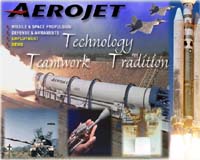 |
Pasadena, Calif. (UPI) Jun 8, 2010 NASA says its ion-propelled Dawn spacecraft -- en route to explore two of the asteroid belt's most massive objects -- has set a record for velocity change. Officials said the record previously held by NASA's Deep Space 1 -- the first interplanetary spacecraft to use ion propulsion -- fell Saturday when Dawn's accumulated mission acceleration exceeded 4.3 kilometers per second -- 9,600 mph. The space agency said a spacecraft's change in velocity refers to its ability to change its path through space by using its own rocket engines. To reach its present location in the asteroid belt, NASA said Dawn had to fire its three engines -- one at a time -- for a cumulative total of 620 days. During that time, it used less than 165 kilograms (363 pounds) of xenon propellant. In one year's time, Dawn's ion propulsion system can increase the spacecraft's speed by 8,850 kilometers per hour (5,500 mph), while consuming the equivalent of only 16 gallons of fuel, NASA said. Dawn's 3-billion-mile mission includes exploration of asteroid Vesta in 2011 and 2012, and the dwarf planet Ceres in 2015. Dawn, launched in September 2007, is managed by NASA's Jet Propulsion Laboratory in Pasadena, Calif.
Share This Article With Planet Earth
Related Links Rocket Science News at Space-Travel.Com
 Aerojet And NEC To Develop Ion Propulsion Systems For Satellites
Aerojet And NEC To Develop Ion Propulsion Systems For SatellitesSacramento CA (SPX) Aug 05, 2009 Aerojet and NEC Corporation have announced that the companies will jointly explore the feasibility of jointly supplying low power ion propulsion systems for the U.S. and Japanese aerospace markets. Ion propulsion systems can be used for geosynchronous satellite propulsion systems and deep space missions providing significant advantages over traditional chemical propulsion systems due to th ... read more |
|
| The content herein, unless otherwise known to be public domain, are Copyright 1995-2010 - SpaceDaily. AFP and UPI Wire Stories are copyright Agence France-Presse and United Press International. ESA Portal Reports are copyright European Space Agency. All NASA sourced material is public domain. Additional copyrights may apply in whole or part to other bona fide parties. Advertising does not imply endorsement,agreement or approval of any opinions, statements or information provided by SpaceDaily on any Web page published or hosted by SpaceDaily. Privacy Statement |